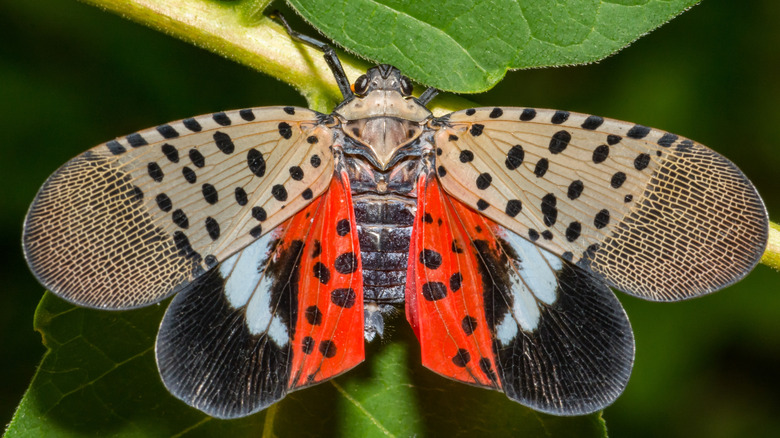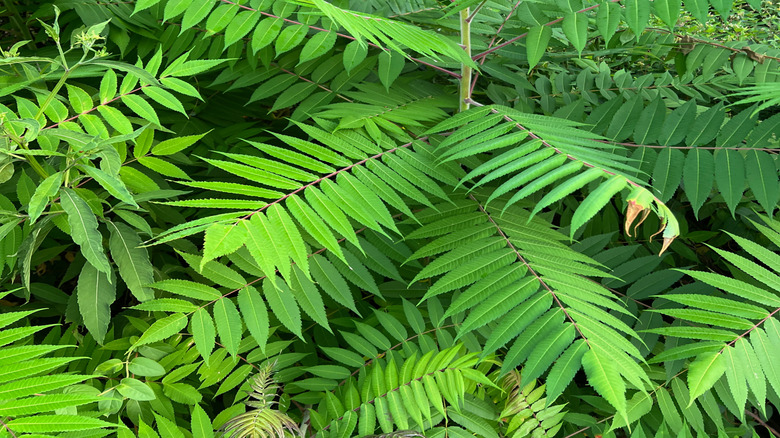The Tree You Should Avoid Planting To Prevent Lanternflies From Invading Your Yard
Whether you live in Pennsylvania and are all too familiar with these flying pests or elsewhere in the U.S. and are facing a growing infestation, once you've seen one spotted lanternfly, there are likely more lurking nearby. While they are pretty to look at and don't pose any direct harm to humans, they are a death sentence for many crops. The primary issue is that when they eat, they leave behind a sticky sap-like residue. This byproduct, on its own, doesn't cause damage to the plant, but it can encourage fungal growth, which greatly affects the health of the plant and disables its ability to photosynthesize.
While the recommended method to control these pests is to kill them on sight, you may also want to eliminate their preferred nesting area — the tree of heaven, or Ailanthus altissima. Believe it or not, this plant is not native to the United States; it's an invasive species that originated in China. Though it arrived in America first in 1700, it spread rapidly across the U.S. and has caused issues for local plant life by crowding them out of their habitat. While many newly introduced species have harmed native species, there are safe methods for removing invasive plants from your garden and lawn.
How to remove the hellish tree of heaven
Like many invasive species from Asia — such as the garden pest hammerhead worms — the tree of heaven is notoriously difficult to kill. While some trees can simply be chopped and forgotten, the tree of heaven requires more effort to fully eradicate. In order to effectively kill it, you will want to use the hack and squirt method. This is done by making cuts in the stump, one for every inch of diameter, and then filling the exposed areas with herbicide.
If you are lucky enough to find a young plant in moist soil, you have the option to pull it out, but you will only want to use this method if you can be sure that no roots will break off and be left behind, as this can cause the growth of new plants. Since removing a plant without leaving any roots behind is quite the challenge, the goal with the hack and squirt is to kill the plant in its entirety before removal, so even if something is left behind, it won't be able to regenerate.
Alternatively, you might consider keeping this tree if it already serves as a primary gathering spot for lanternflies. Since they are strongly attracted to it, you can use the tree of heaven to trap and remove lanternflies and their egg masses – a typical case of keeping friends close and enemies of the environment closer.

